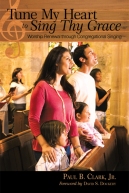 I recently read a thoughtful article by composer-arranger-recording artist, Bruce Greer[1]. The title of the article caught my eye, “Food Court Worship – The Starvation of Church Unity.” Rather than re-quote the full article here, I would like to draw attention to a few segments and couple those with reflections I have read from other church leaders who have given voice to these issues. The “Food Court” article says,
I recently read a thoughtful article by composer-arranger-recording artist, Bruce Greer[1]. The title of the article caught my eye, “Food Court Worship – The Starvation of Church Unity.” Rather than re-quote the full article here, I would like to draw attention to a few segments and couple those with reflections I have read from other church leaders who have given voice to these issues. The “Food Court” article says,
Somehow we’ve decided that the Food Court approach is the best way to reach our ever increasingly diverse world. You know what I’m talking about. Go to the mall and everyone divides up and goes off to eat a meal of your own choosing. It seems logical. Of course, there is no passing of the bread or the cup. No real supping together. And somewhere inside, my spirit is crying out, “NO!”
Bruce is spot on in drawing our attention to this comparison. His statement draws out the fallacy of “preference-based” worship. How can “getting what I want” in worship music style possibly square-up with Jesus’ prayer in John 17:21-23?
May they all be one,
as You, Father, are in Me and I am in You,
May they also be one in Us,
so the world may believe You sent Me.
I have given them the glory You have given Me.
May they be one as We are one.
I am in them and You are in Me
May they be made completely one,
so the world may know You have sent Me
and have lovedthem as You have loved Me.
Greer further advocates for “converging worship, where there is distinction in musical styles. Juxtaposing a grand hymn accompanied by pipe organ right next to a contemporary song led with guitars and drums.”
In this method Bruce is calling for stylistic expressions to be allowed their own authenticity. He indicates that this converging approach is practiced in his own congregation and indicates that it is not just “tolerated,” but rather indicates a “surprise how supportive and engaged our people (young, old, rich, poor, black, white or brown) are to this approach.”
He further contrasts this approach with situations whereby
Some churches have tried to make peace by developing a ‘blended’ worship style. In theory this works. However, in practice a lot of ‘blended’ music is scrambled music. Instead of being what it is – diverse songs in diverse styles – it is homogenized.”
I can feel some of you purists (classical or rock) cringing now. Believe me, been there – done that. And I have also sadly heard and overheard denigration of worship expressions offered by others (in a preferred styled other than their own of course) with little consideration seemingly given as to what may have been taking place in the hearts of the worshipers from which they came.
The point well taken from Greer’s article is the plea for unity in the church! Though coming at the issue from different directions, or more precisely from different disciplines, author/pastor/theologian, Tullian Tchividjian arrives at a similar point of view with different terminology. The heart of the matter in each case, however, I believe is the same. The real concern is the unity of the church and the power of the Gospel. Tchividjian rightly directs our attention to the potency question:
You see, when we separate people according to something as trivial as musical preferences, we evidence a fundamental failure to comprehend the heart of the gospel. We’re not only feeding toxic tribalism; we’re also saying the gospel can’t successfully bring these two different groups together. It’s a declaration of doubt about the unifying power of God’s gospel.
For many of us who are musicians our starting point in evaluating worship music is the music itself. For pragmatic church builders, the starting point may be how many worshipers are drawn under their steeple by a kind of music. In truth, if the point is worship of the living God in Christ, who looks upon the hearts of those gathered in His Name, then why would not the controlling point of our worship be that which answers His prayer? (John 17) Why would we desire any less than grand display of power in the gospel that knows no male, female, Jew, or Gentile, but rather seeks to save that which is lost! O that we might know Him in the power of His Resurrection and each time we gather to worship truly be
One body and one Spirit(I)—just as you were called to one hope[b](J) at your calling—one Lord, one faith, one baptism, one God, and Father of all, who is above all and through all and in all. (Eph 4:4-6)
Now that kind of singing is powerful singing!!! Soli deo Gloria!
[1] Bruce Greer serves with his wife, Kim, as co-Ministers of Music for First Baptist Church, Oklahoma City, Oklahoma.



